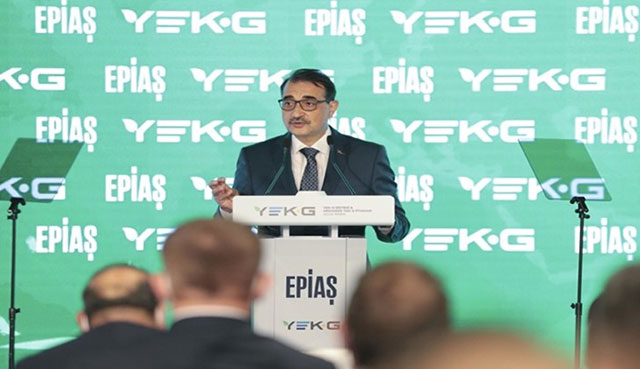
Turkey Monday initiated a new certification system that looks to support and increase the country’s clean energy power, boost renewable energy accessibility and offer producers and consumers an alternative when choosing the source of energy, they use.
The Renewable Energy Guarantees of Origin (YEK-G) System and the Organized YEK-G Market will make a significant contribution to further the development of renewable energy sources, Energy and Natural Resources Minister Fatih Donmez told the opening ceremony.
The YEK-G System and the Organized YEK-G Market will enable electricity producers to prove the source of renewables under Turkey’s Energy Exchange Istanbul (EXIST) launched for contracts. Donmez lauded the new certification system for helping support and increase the country’s clean energy power.
Aiming to promote awareness of renewables as an increasingly important source of power in the country, EXIST commissioned the YEK-G System and the Organized YEK-G Market on June 1 to accredit the production and consumption of renewable energy resources. The initiatives will provide both large-scale organizations and individual consumers with proof of origin of power generated from renewable energy sources.
In addition, the system will also document the use of renewable energy sources for electricity production and consumption at all stages in power supply and distribution companies’ sustainability reports. The nation’s renewable capacity grew steadily, particularly over the last few years, to currently account for about 45% of the country’s total electricity generation.
Each 1 megawatt-hour of renewable energy supplied to the network by the licensed generation facilities in the new system will be recorded and documented. According to EXIST, participation in the YEK-G System will be on a voluntary basis. “We offer our producers and consumers an alternative to choosing the source of the electricity they use,” Donmez said. Through the YEK-G renewable energy accreditation, in the form of an identity card, the energy of final consumers will show any renewable energy used.
The system will ensure that supply and distribution companies will be able to verify renewable energy in their portfolio within the scope of their obligations. Consumers, likewise, will be able to obtain information about the energy sources they purchase with the option to choose renewables to contribute to environmental protection. Donmez confirmed that 100 participants signed up for the system by June 21. “These participants registered 127 renewable energy power plants in the system. Fifty-three participants have an electricity generation license while the rest have an electricity supply license,” he said.
He added that certification for 5.2 terawatt-hours of renewable electricity had been set up by June 21. EXIST’s General Manager Ahmet Turkoglu said that renewable energy certificates became accessible to both corporate organizations and individual consumers with the YEK-G System developed by EXIST using blockchain technology. “Our goal with the YEK-G System is to expand the use of renewable energy sources in electricity produced and consumed, create a new source for our industry and contribute to the protection of the environment,” Turkoglu added.
Source: Daily Sabah
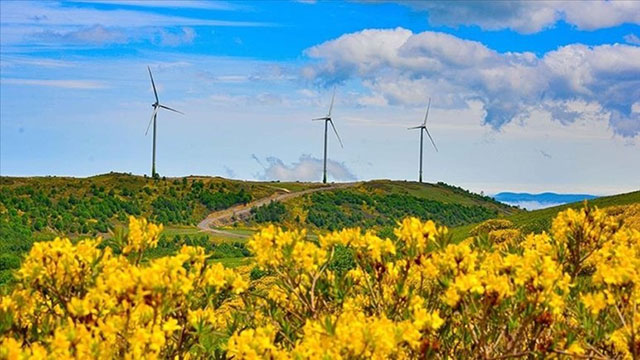
Turkey’s renewables expansion, driven by hydro, wind and solar places the Izmir province as a leader in wind power and Konya as a pioneer in solar energy, data compiled by Anadolu Agency reveals.
Of the country’s total renewables capacity of 50,990 megawatts (MW), hydropower stood at 31,280 MW, wind power reached 9,543 MW and solar totaled 7,070 MW.
Turkey also has sizable geothermal capacity at 1,595 MW. With over $50 billion investment in renewables, renewable capacity accounted for 52.5% of the country’s total installed electricity, which at the end of April reached 92,377 MW.
The total renewable capacity of Turkey, which varies across the country in terms of resources, corresponds to about 1.7% worldwide. Turkey’s installed hydropower capacity accounts for 3% globally, according to a recently published REN21’s Renewables Global Status Report, and this ranges across 72 provinces at varying capacities.
However, the country ranked second in 2020 in terms of additional hydropower capacity of about 2,500 MW after China. Sanliurfa, a province in southeastern Turkey, leads in hydropower with 3,128 MW. The eastern province of Elazig follows with 2,287 MW and Diyarbakir with 2,250 MW. Artvin, located in the east of the Black Sea region, has 2,167 MW of installed hydropower capacity, while Adana in the south with 1,902 MW is considered one of the top five highest hydropower capacity regions.
Turkey’s wind power, which is expected to soon pass a 10,000 MW threshold, is concentrated more in the Aegean and Marmara provinces. Izmir with 1,635 MW is the capital of wind energy, followed by Balikesir and Canakkale in the Marmara region with 1,275 MW and 808 MW respectively.
The Aegean province of Manisa has 736.5 MW, and Hatay in the south is the fifth largest wind city with 412.5 MW. Istanbul, Turkey’s most crowded city with the highest power consumption has 398.7 MW of installed wind capacity. Turkey ranks as the world’s 12th biggest wind power producer and fifth in Europe and plans to add at least 1,000 MW both in wind and solar annually.
Turkey’s solar power of 6,450 MW unlicensed and 620 MW licensed installations varies across its different installation sites. Konya, located in Central Anatolia, is the largest solar province in Turkey with 843 MW, followed by Ankara with 383.8 MW and Sanliurfa with 370 MW. Kayseri and Izmir are among the top 5 biggest solar cities with 333 MW and 291 MW of installed capacity respectively.
Turkey is the world’s fourth-biggest geothermal country in the world, according to REN21 report, accounting for 11% of global geothermal power. Turkey’s geothermal installed capacity is mainly concentrated in the Aegean region.
The province of Aydin has the highest geothermal capacity at 850.4 MW, followed by Denizli with 354 MW and Manisa with 349 MW.
Turkey’s biomass capacity, however, is growing at a slower rate compared to other resources. Istanbul leads in biomass capacity with 139 MW, Ankara and Izmir follow with 83.9 MW and 58.2 MW, respectively. Turkey’s installed renewable power accounts for around half of the country’s electricity output.
According to Ember, a London-based think tank, Turkey met 12% of its total electricity generation from wind and solar in 2020, corresponding to 9.4% of the world’s average.
In the fight against climate change and to reduce the country’s current account deficit from its hefty energy import bill, renewable energy is of critical importance to Turkey, which has a higher potential than its installed solar and wind capacity.
Source: Anadolu Agency

ESMIG has called for standard essential patents to be licenced on a ‘fair, reasonable and non-discriminatory’ (FRAND) basis.
In a new poisition paper the European energy product and service provider association has expressed concern over the licensing practices of some standard essential patent (SEP) owners with the potential impact on the costs of smart meters and ultimately the cost-benefit of the rollout itself. “The continued refusal by many SEP owners to exhaustively license SEPs to companies at any commercially reasonable point of the supply chain will lead to higher smart meter prices. In the end, this means that the consumer will have to bear the cost increase,” the position paper states.
Specifically, the paper highlights wireless communication SEP owners that refuse to license component level companies that provide the wireless connectivity modules that smart meter manufacturers buy. “This will cause unpredictable cost increases, leading to business uncertainty and will also have a negative impact on the competitiveness of the entire sector, especially on the R&D investments of component suppliers that lead to novel, more advanced and more sustainable solutions for the smart meters of the future.”
The issue of communication SEPs is not new and has become more widely publicised with the growth of 4G and now 5G and implementation in the Internet of Things in areas such as vehicle connectivity. An example is the recently settled high profile legal dispute running over two years between Daimler and Nokia. Daimler argued its suppliers, rather than it, should buy the technology from Nokia and pay the royalties although in the settlement between the two companies Daimler agreed to be the licencee.
In an interview with Smart Energy International, Tomás Llobet, Managing Director of ESMIG, told Smart Energy International that the issue had come to the fore again within the association and with the attention from others such as the automotive and tech industry sectors. “For us it’s not just about the meter manufacturers but the whole ecosystem including the providers of the wireless connectivity modules. An increased cost on a relatively low margin product makes it more expensive.”
With the complexity of the issue and the fact that any formal resolution is still far off, ESMIG‘s proposal as outlined in the position paper is that SEPs in the smart metering sector should be licenced on a FRAND basis.
This would ensure that such patent owners receive reasonable compensation for their patented innovations while preventing them from receiving remuneration for innovation that is unrelated to their own efforts and would stop them from refusing licenses to any company willing to negotiate and sign a FRAND license, the paper states.
Moreover, SEP holders should not be able to refuse a FRAND license to patent implementers simply because of their position in the product supply chain. Such denial is a violation of the SEP holder’s pledge, specifically the non-discriminatory principle of the FRAND obligation.
Source: Smart Energy International
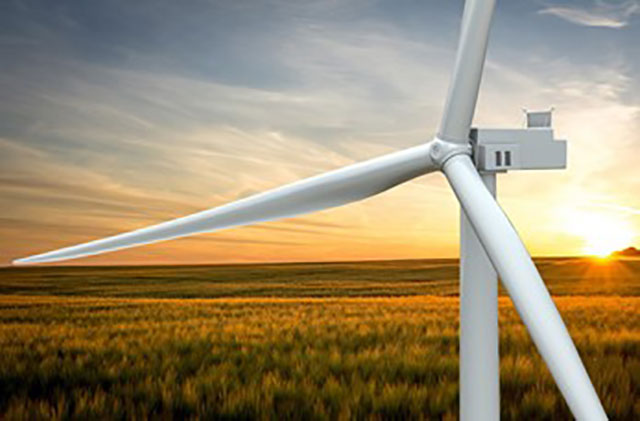
A consortium of GE Renewable Energy, LM Wind Power and TNO, are collaborating on the TIADE project to develop technologies and design methods for more efficient operation of next-generation wind turbine rotors, wind farms with large rotor wakes, and demonstrate them in the field.
The TIADE project touched a new milestone with the research wind turbine becoming fully operational. The innovations developed in the project will be tested on the full-scale 130 m diameter turbine recently installed in Wieringermeer, Netherlands. The turbine is powered by two-piece blades, which allows the outer 12 m of the blades to be replaced by several innovative tips.
“Our revolutionary two-piece blade design has helped us drive down the levelized cost of energy. Here, in this project, we are applying new technology to significantly increase speed and reduce cost associated with testing and validation,” said Ben Hendriks, Chief Engineer Turbine System Integration at LM Wind Power.
Peter Eecen, R&D Manager at TNO Wind Energy stated: “Innovations in wind turbine blades are essential to make renewable wind energy even more affordable. We are proud we will validate blade innovations and aerodynamic simulations tools in the field, together with GE Renewable Energy and LM Wind Power. Thereto advanced measurement techniques are used in a unique set-up that combines detailed wind inflow measurements and unsteady pressure measurements on the blade.”
Various innovative blade add-ons, such as spoilers, serrations, vortex generators, ‘turbulators’ and blade tip improvements will be validated using advanced measurement techniques. The results will accelerate widescale application of rotors with higher annual energy production and thus a considerably lower cost of offshore wind energy.
These solutions can be applied to newly manufactured wind turbines in the factory, but they can partly also be retrofitted to existing offshore wind farms. With both options available, implementation of the technologies in offshore wind farms can be done from 2023. The consortium comprising of GE Renewable Energy, LM Wind Power and TNO was established in 2020 to test new research on blade tip improvements under the three-year and ten months TIADE project, with partial funding from the ‘Topsector Energiesubsidie’ of the Dutch Ministry of Economic Affairs.
Source: Evwind
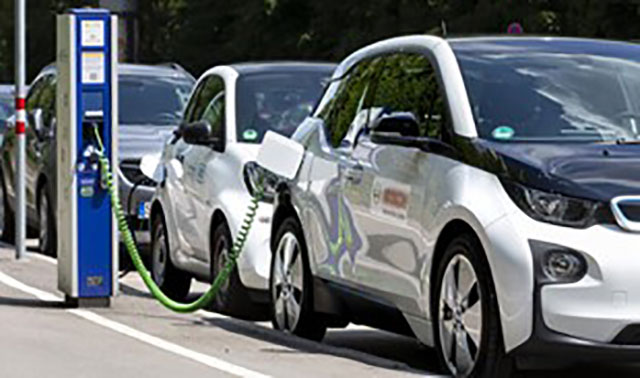
According to a comprehensive research report by Market Research Future (MRFR), “Electric Vehicle On-Board Charger Market”, Research Report, Current Type, Propulsion Type, Vehicle Type and Region - Forecast till 2027”.
The global electric vehicle on board charger market is projected to reach USD 13.8 billion by 2027 from an estimated USD 3.4 billion in 2020, at a CAGR of 23%.
EV charging infrastructure projects for public spaces are boosting worldwide. With the proliferation of e-mobility and environmentally friendly charging solutions, the market is estimated to witness significant growth during the upcoming period.
The market is witnessing the rising demand for new automated EV charging systems. Therefore, evolution in this segment has been constant. Mobility services providers are increasingly using a charging system precisely adapted to the charging infrastructure requirements for charging in public spaces.
Governments in countries across the globe have realized the potential that electric vehicle onboard chargers hold. Many of them have initiated new policies and proposals, designing programs for e-mobility charging infrastructure. Such initiatives have further helped them meet their own goals to address climate change and net-zero carbon targets. Besides, e-vehicle onboard chargers have a set standard for speed and convenience.
Additional factors influencing the market growth include large-scale implementations of these EV powering solutions and increasing government initiatives to revolutionize mobility. Conversely, requirements of a large structure and high investments to develop charging stations or infrastructures are major growth impeding factors for the market. Nevertheless, increasing R&D investments to develop innovative EV charging solutions would support the market growth throughout the review period.
The market is segmented into current types, propulsion types, vehicle types, and regions. The current type segment is sub-segmented into AC and DC. The AC segment holds the largest market share. The segment is forecasted to register an impressive CAGR in the coming years.
The propulsion type segment is sub-segmented into BEV, HEV, and PHEV. The BEV segment holds the largest market share. The segment is forecasted to register an impressive CAGR in the coming years.
The vehicle type segment is sub-segmented into passenger cars, LCV, and HCV. The passenger cars segment holds the key market share. The segment is forecasted to register an impressive CAGR in the coming years. The region segment is sub-segmented into Americas, Europe, Asia Pacific, and rest-of-the-world.
Source: GlobeNewsWire
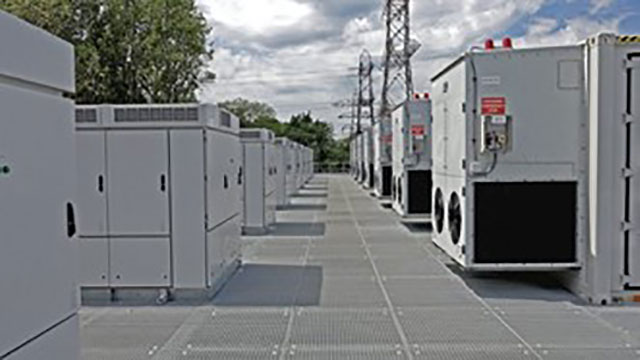
A 50MW lithium-ion battery energy storage system has come online in Cowley, on the outskirts of Oxford, in what is described as a UK first.
The battery was ordered in early 2020 and forms part of Oxford’s Energy Superhub Project, first announced by the Government in 2019 as a part of a string of new smart energy systems demonstrator projects. It is connected to National Grid’s high-voltage transmission system at its substation, providing the flexibility services so often said to be a key part of the transition to more renewable electricity generation and distribution.
An 8km private wire network has been installed with the battery. This will share the connection to the transmission system with public and commercial electric vehicle (EV) charging hubs across the Oxford city-region. The first location to benefit will be the Redbridge Park & Ride, which will feature 38 ultra-rapid chargers once it opens later this year.
While the 50MW lithium-ion battery is now activated, the Superhub is not yet classed as completely online. A vanadium redox flow battery, from Invinity Energy Systems, will come online later this year. This kind of battery has been touted as having a longer lifespan than lithium-ion models and is regarded as easier to scale, but the technology is not as mature, especially at grid scale.
Pivot Power is leading the Superhub project, in partnership with battery operation and management services providers Habitat Energy, technology supplier Wärtsilä Energy, Oxford University, Oxford City Council, Kensa Consulting and Invinity Energy Systems.
Pivot Power’s chief executive Matt Allen said the connection of the battery to the transmission network is a “key milestone” for the project.
“We are planning up to 40 similar sites throughout the country, totalling up to 2GW of battery storage – forming a key pillar of EDF’s plan to develop an additional 10GW of battery storage globally by 2035,” Allen said.
Source: Euractiv
Financing Clean Energy Transitions in Emerging and Developing Economies
According to International Energy Agency’s report, emerging and developing economies play critical role in meeting net-zero targets and require over a $1 trillion investments annually for clean energy transition.
Please click here to read the full report.
You are My Energy Acceleration Program Demo Day Organization
August 2021
Solar Istanbul
22 - 25 September 2021
11. Turkey Energy Summit
10 - 12 October 2021
14. EIF World Energy Congress and Expo
13 - 15 October 2021 / Antalya
ISES SWC 2021 Solar World Congress Vırtual Conference
25 - 29 October 2021
European Utility Week (Enlit Europe)
30 November - 2 December 2021

